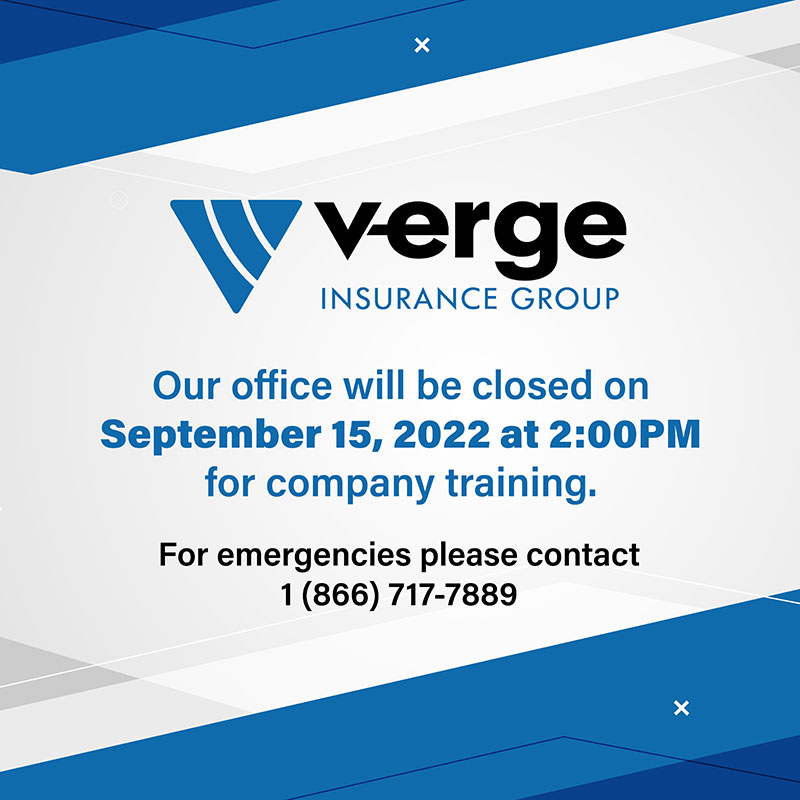Are you mitigating your risk of employment practices violations? If not, your business could be open to an employee lawsuit that your commercial general liability (CGL) policy won’t cover.
CGL insurance excludes employment practices claims. And if you think your commercial umbrella policy will extend coverage for an employment practices lawsuit, it won’t. Umbrella policies only extend coverage to the underlying policies you already have. You’d need employment practices liability insurance (EPLI) for that.
What does EPLI cover?
General liability only covers bodily injury, property damage, defamation and other liabilities involving nonemployees, like customers and vendors. Workers’ compensation covers employees for workplace injuries but not for improper handling of employee rights.
EPLI protects businesses and nonprofits against employment practices claims. It covers unintentional improper acts, such as wrongful terminations, retaliation, harassment, discrimination and other violations of employees’ legal rights. However, EPLI doesn’t cover work-related injuries; you’d need workers’ compensation insurance for that.
You can add EPLI to your business owners policy (BOP) or get a stand-alone policy. EPLI helps cover legal fees and settlements, which can be a costly endeavour for businesses of any size.
What are some employment practices liability risks?
Here are examples of employment practices violations:
- Retaliation by management against employees
- Wrongful terminations
- Discrimination based on race, religion, age, sex, disability, genetic information, nationality, pregnancy and other protected characteristics
- Sexual harassment
- Breaches of contract
- Mental or emotional harm
- Defamation and slander
- Invasions of privacy, including biometric information and surveillance
- Failures to promote and deprivations of career opportunities
- Negligent evaluations
- Negligence
- Mismanagement of employee benefits
- Genetic discrimination
Are smaller businesses at risk for employment lawsuits?
Yes. Being a small business doesn’t exempt you from compliance requirements. Many small to midsize businesses lack a full-time legal or human resources department, which exposes them to greater liability. A midsize business may not have the resources to withstand an employee lawsuit. That’s why all businesses should take a proactive approach to their employment practices.
Beyond legal compliance, maintaining a respectful and safe work environment is vital for hiring and retaining skilled employees. Happy, well-respected employees reflect positively on their employers and the customers they do business with.
Who oversees employment practices?
Organizations in Canada are held to rigorous standards under federal and provincial laws and regulations. These standards apply whether you’re a business, government entity, nonprofit or religious institution.
Administrative tribunals such as the Canadian Human Rights Tribunal, the Federal Labour Relations Board or the Employment Equity Tribunal field most employment-related complaints, and most cases that do make it to court are resolved by judges.
This means that the potential for a large payout is far less than in the United States. But that doesn’t mean you shouldn’t get EPLI coverage.
There’s a great deal of complexity in the law. As a result, employers are at risk for a wide array of mistakes. That’s why it’s essential to consult with lawyers and HR professionals who are knowledgeable in employment law and liability.
Should you use an attorney or HR professionals?
You need both. An attorney specializing in employment law is invaluable, since they understand and stay current with legal updates and their application to businesses. They can help you stay in compliance with provincial and federal laws, as well as review and draft employment contracts.
Consult with your HR specialist, too. They stay current with laws and can help with
- Drafting employee manuals
- Sourcing training
- Advising on appropriate hiring, disciplining and firing practices
- Providing a range of other valuable services
If you don’t have the budget for a full-time HR professional, consider hiring a freelance one. Most freelance marketplace job platforms feature listings for HR specialists.
Always vet your candidates thoroughly before retaining their services.
What are some risk scenarios?
Businesses can face employment practices liability for issues ranging from payroll errors to hostile workplaces to bad management behaviors, such as threatening the safety and well-being of workers. These acts are especially problematic if they are frequent or management doesn’t respond when attention is brought to the problem.
Here are examples of such situations:
- An employee reports fending off sexual advances from a manager. Before investigating or taking witness statements, the company owner asks the manager and the employee to sit down together and resolve the issue like adults. Asking the employee to directly confront the manager (the accused) without conducting a formal investigation or assessing evidence can exacerbate the situation. It risks retraumatizing the employee and creates an opportunity for further intimidation or retaliation.
- A supervisor retaliates against a worker who reported a safety issue on the job by reducing the worker’s hours and issuing a negative evaluation. Under whistleblower protection laws, employers can’t retaliate against employees for raising safety, compliance, or ethical concerns. Retaliation exposes the employer to legal action and fines.
- Employees post derogatory statements about a coworker on a company bulletin board. Management doesn’t remove them in a timely manner or investigate the occurrence. Situations like these can create a hostile work environment for the worker and their colleagues.
- An employee claims they were denied appropriate overtime pay. Management does not investigate in a timely manner. Not promptly investigating claims can result in legal exposure, including back pay, fines and penalties. Damages could be awarded if the employer is found to be in willful violation of wage laws.
- A supervisor ignores sexually and racially offensive jokes, dismissing them as team members blowing off steam. Ignoring the conduct signals tolerance for inappropriate behaviour that could spiral into legal claims. Employers can be held liable for a hostile work environment created or perpetuated by their supervisors.
In cases like these, the business will incur costs to mount a defense, regardless of whether the claims are merited. Legal expenses, reputational damage and internal investigations will still occur, even if the complaint is unsubstantiated.
What steps can you take to reduce your risk of employment practices complaints?
Don’t ignore employee issues. Problems in the workplace may seem small, but disputes can escalate quickly. Train your employees on their workplace rights when they’re hired and annually thereafter.
Don’t hide internal or external reporting protocols from your employees. It’s illegal to keep your employees uninformed about how to file complaints with government agencies. One of the first things a regulator or lawyer will ask a complainant is whether they reported the situation or misconduct to their employer and, if so, what the response was.
Having a clearly articulated reporting protocol with excellent recordkeeping and follow-up can go a long way in showing your company’s good faith. It can also help resolve matters before they reach regulators and courts.
Conduct a thorough and objective investigation as soon as you become aware of any employee complaints. Involve HR for advice and next steps as soon as possible.
Use artificial intelligence and technology wisely
As technology advances, so do risks. Technology can be a help or become a liability, depending on how it’s managed.
Using or collecting genetic and biometric information can inadvertently infringe upon employee rights. For example, using surveillance video in protected areas or retaining biometric information from scanners without employees’ consent can violate their rights.
Relying on AI for hiring decisions, crafting communications or giving advice can become a liability without oversight. For example, if an AI gives incorrect information to your employees about benefits selection or career path advice, you might be held responsible.
AI-powered tools can assist with emails, reports and other content to ensure they set the proper tone, reading level and message before distribution. Always review writing, whether it’s AI-generated or not, before sending it out. Using the read-aloud function on your browser or word processing software can help you catch unintended errors before they’re sent.
When using AI tools to screen applicants or make other employment decisions, ensure they’re free from bias. Only use reputable AI tools that are transparent and have provability built into their recommendations. Blaming the AI tool will not make a good defense in court.
When used properly and with human oversight, AI tools can help supplement employee training in a way that engages employees and boosts their learning, awareness, and empathy.
Call your broker to review your liability exposure
EPLI is a crucial tool in every company’s portfolio. Combined with a top-down culture of respect, clearly communicated and documented protocols for employee treatment, swift and balanced policy enforcement, and adherence to employment law, EPLI can help as a last line of defense against employment practices claims.



